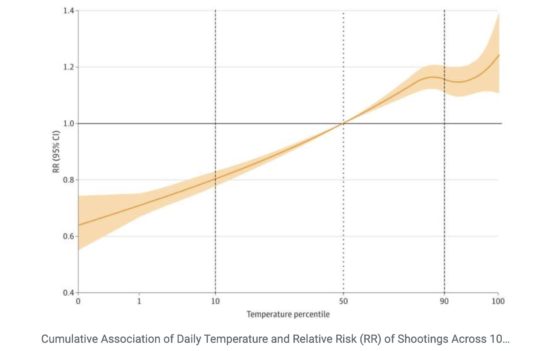
The comprehensive study reveals that nearly seven percent of shootings can be attributed to above-average daily temperatures, even after adjusting for seasonal patterns. The findings indicate that the Northeast and Midwest regions experience the sharpest increases in gun violence on hotter-than-normal days.
“Our study provides strong evidence that daily temperature plays a meaningful role in gun violence fluctuations,” says study senior author Dr. Jonathan Jay, assistant professor of community health sciences at BUSPH, director of BUSPH’s Research on Innovations for Safety and Equity (RISE) Lab, and a partnering faculty member of Boston University’s Center for Climate and Health (BU CCH).
Powered by WPeMatico
